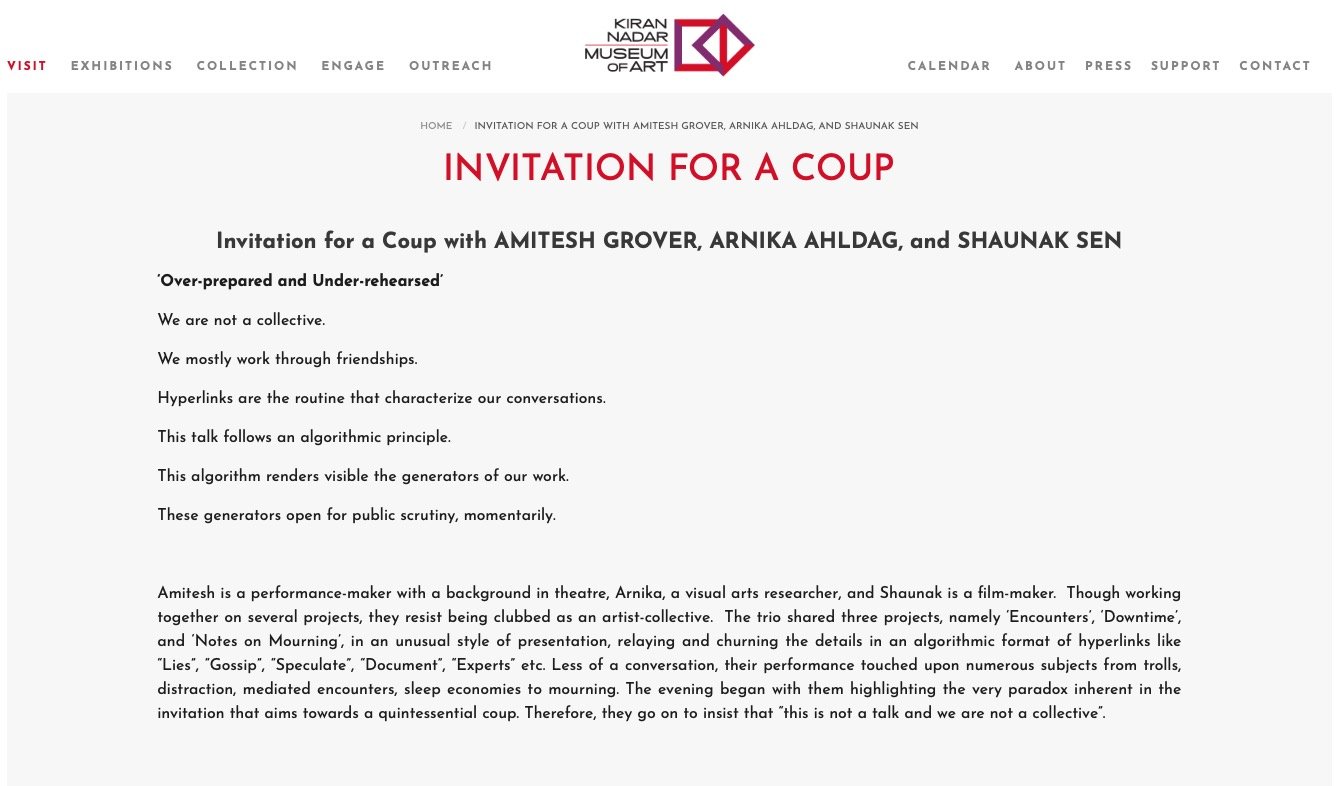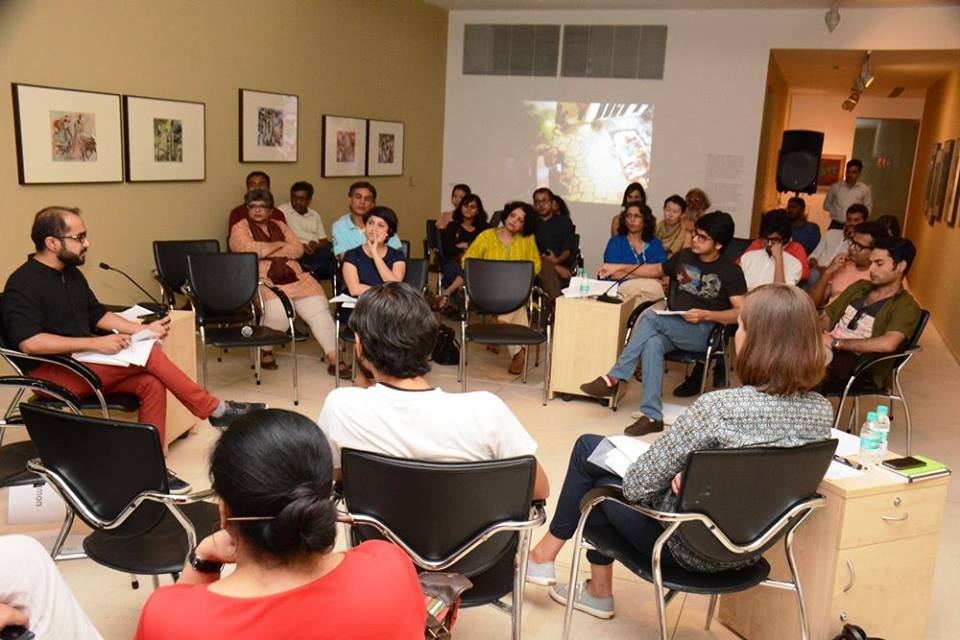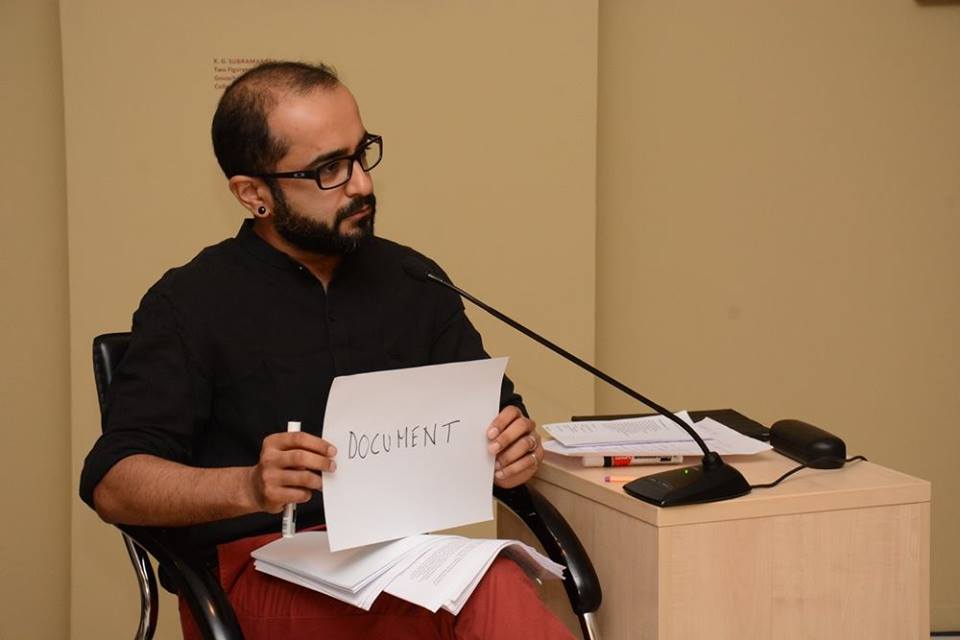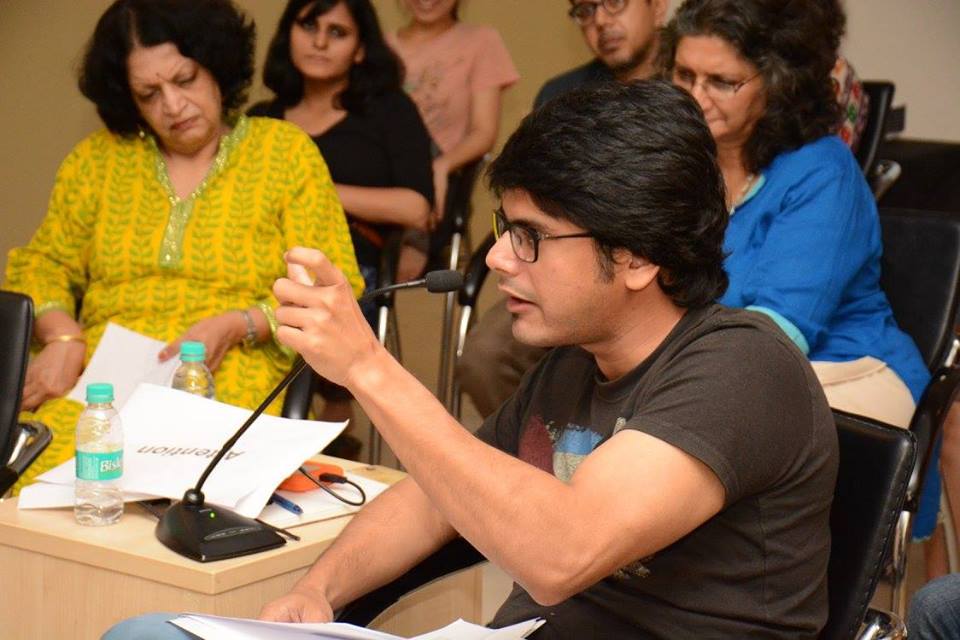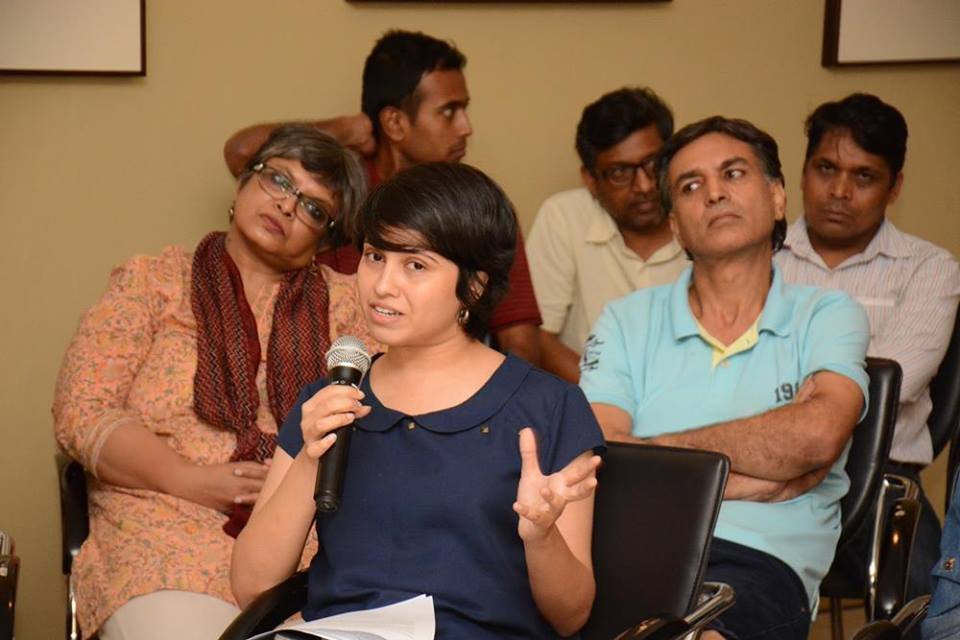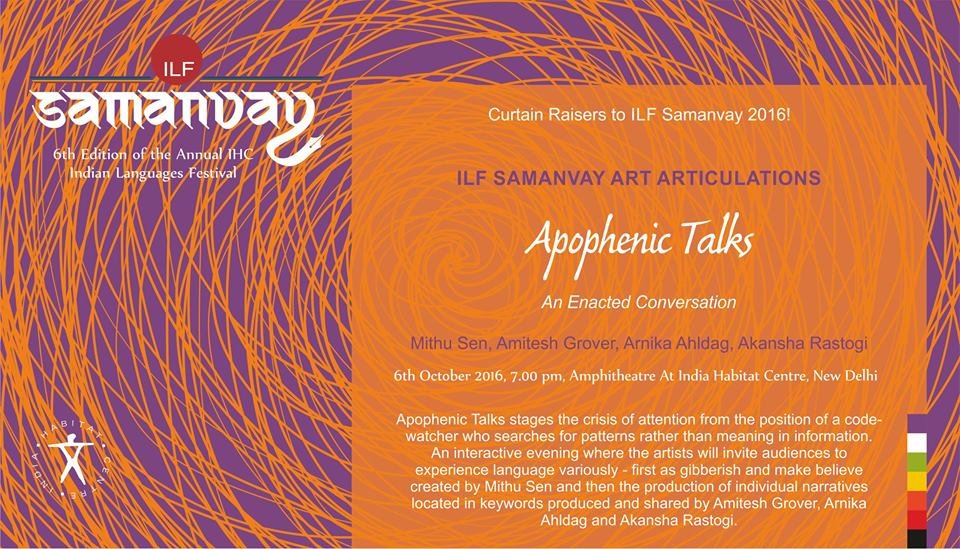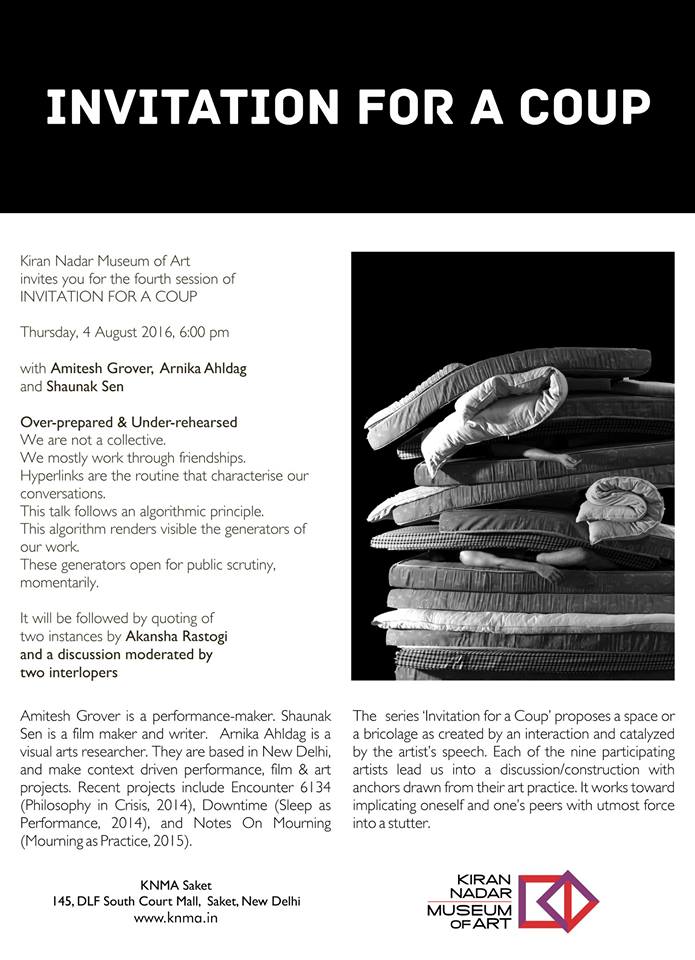APOPHENIC TALKS
Conversation Art (2016)“Celebrated contemporary artist Amitesh Grover pushed language to its limits” - The Pioneer
“Grover creates a show on language, anti-language and silence” - The Indian Express
The crisis of attention has made us all experts of distraction in our everyday life. Our attention has become the scarce resource, that faces information in abundant supply. A code-watcher is unable to read all information on his screen, instead he looks for patterns. Patterns of noise and signal. Apophenic Talks will stage this crisis; we as speakers will navigate through a constant prototyping of ideas, manifestos, artistic strategies, and provocations. Our conversation will be hyperlinked, algorithmic, spontaneous. An index of key words will be made available to the audience. We will choose our own distractions, we will prepare anecdotes and perhaps gossip. Our talk will be Under-Rehearsed and Over-Prepared.
<Apophenia is defined as the perception of patterns within random data. The most common examples are people seeing faces in clouds or on the moon. Apophenia is about “drawing connections and conclusions from sources with no direct connection other than their indissoluble perceptual simultaneity,” as Benjamin Bratton recently argued>
HOW TO PERFORM
Develop an index of words that will serve as hyperlinks/inter-sections
Collate a set of imagery to project alongside
Print the index for the audience
Rehearse for the talk
Non-Manual
An unrehearsed melody is this talk; each utterance, every idea, all hesitation, everything that occurs and that does not, forms the notes of this spontaneously forming symphony.
The talk must not be rehearsed, but the participants must over-prepare for it. Evolve a pool of index-words, collate, steal, write, quote, paraphrase anything & everything that might be needed. Come to the talk with a surplus of notes.
Open the talk with a poem/image/audio/story
Display your hyperlink - hold up a word that is already printed, or write a new word and show it. Be careful to write a word that is not a meta-idea, but a marginal one, a small word that is often almost invisible in the terrain of langauge.
Let thoughts take shape during the talk in enunciations, form themselves even if amorphously, let them evolve as a sculpture for all to see. Take delight and be surprised.
Stand-up, shift focus, choose a different intensity, or a person in the audience to share your thought with. Forge cross-border connections - follow image with philosophy, music after fiction, anecdote after animation. Lets keep in mind that comprehension is a slow process; nothing may be understood immediately.
Find an end - Ask the audience a question. Leave. Burn your notes.
Conceived by Amitesh Grover, along with Shaunak Sen, Akansha Rastogi & Arnika Ahldag | Produced by Kiran Nader Museum of Art | Duration: variable | Language: English
